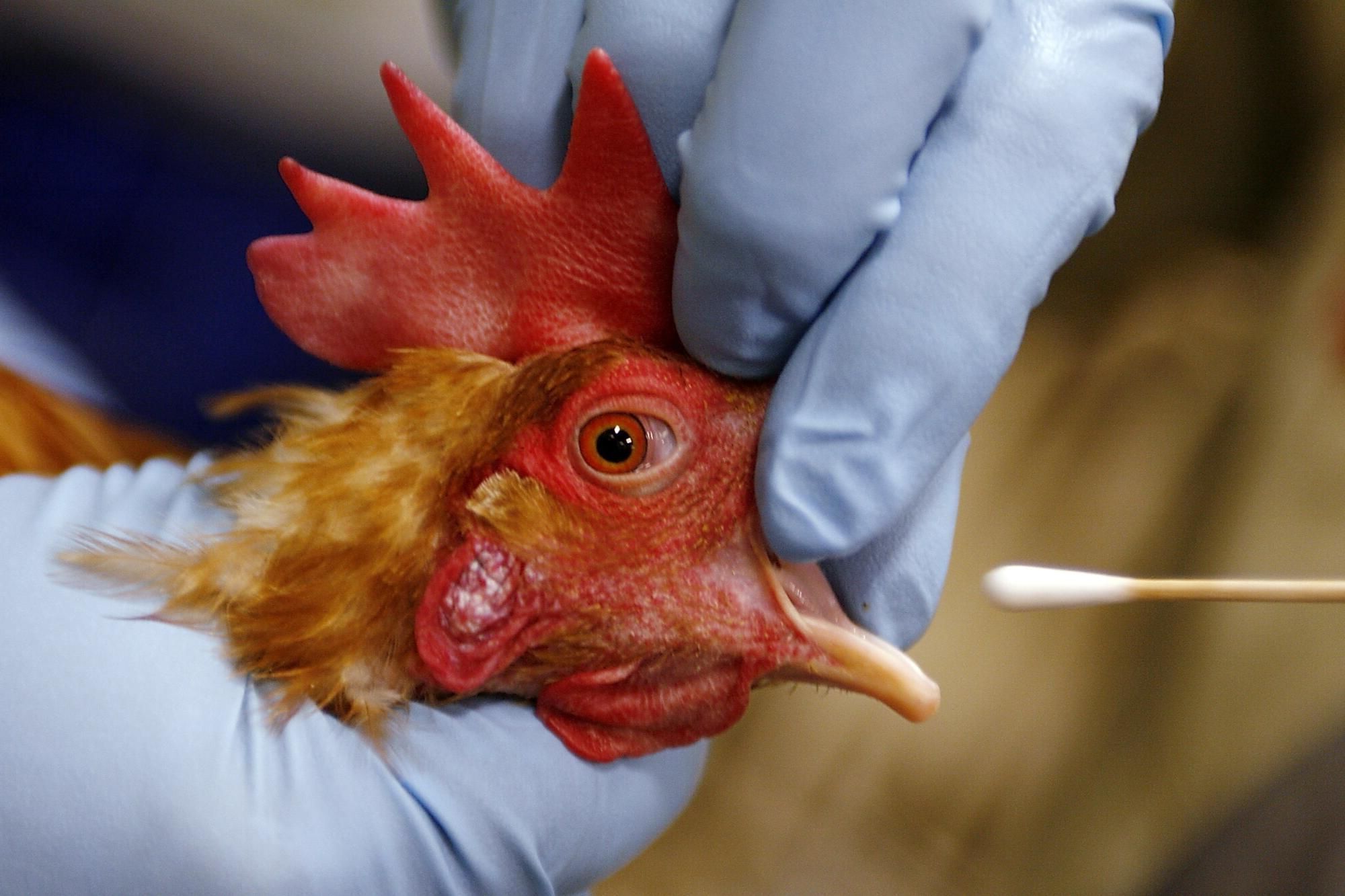
What is Avian Flu? Avian influenza, or bird flu, is a highly contagious viral disease that primarily affects birds but can also infect humans and other animals. Originating from wild waterfowl and domestic poultry, this virus can spread through direct contact with infected birds, their droppings, or contaminated surfaces. Human cases, though rare, have been reported, especially in Asia. Symptoms in humans range from mild respiratory issues to severe pneumonia and even death. With a high mortality rate in humans, particularly from the H5N1 subtype, avian flu poses a significant threat to global health and the poultry industry. Understanding its transmission, symptoms, and prevention is crucial for managing outbreaks.
What is Avian Flu?
Avian influenza, or bird flu, is a viral disease that primarily affects birds but can also pose a threat to humans. Understanding its nature and impact is crucial for both public health and the poultry industry.
- Definition: Avian influenza is caused by the influenza A virus, which mainly infects birds but can also spread to humans and other animals.
- Types of Avian Influenza: The most common subtypes affecting humans are H5N1, H7N9, and H9N2. Each subtype has unique characteristics and transmission patterns.
- Origin: The influenza A virus is naturally found in wild waterfowl and domestic poultry, serving as reservoirs for the virus.
- Transmission: It spreads through direct contact with infected birds, their droppings, or contaminated surfaces. Humans can also get infected by inhaling aerosolized virus particles or consuming undercooked poultry.
Human Impact and Symptoms
While avian flu primarily affects birds, it can have severe consequences for humans who come into contact with the virus.
- Human Cases: Human infections are rare but occur when people have close contact with infected birds or contaminated materials. Most cases have been reported in Asia.
- Mortality Rate: The mortality rate for avian flu in humans is high, especially for the H5N1 subtype, with some outbreaks showing rates as high as 66%.
- Symptoms: Symptoms range from mild to severe, including fever, cough, sore throat, and shortness of breath. Severe cases can lead to pneumonia and acute respiratory distress syndrome (ARDS).
- Risk Factors: Higher risk groups include poultry workers, farmers, and veterinarians. People living near poultry farms or markets are also at increased risk.
Global Spread and Economic Impact
Avian flu is not confined to one region; it has a global footprint, affecting economies and public health systems worldwide.
- Global Spread: Avian flu has been reported in Asia, Europe, Africa, and the Americas. International trade and travel contribute to its spread.
- Economic Impact: Outbreaks lead to the culling of millions of birds, causing substantial financial losses in the poultry industry.
- Public Health Response: Authorities monitor outbreaks and implement measures to prevent human infection, including surveillance and providing guidance on personal protective equipment (PPE).
- Vaccination Efforts: Developing effective vaccines is challenging due to the virus's rapid mutation, but researchers are working on vaccines that protect against multiple subtypes.
Prevention and Treatment
Preventing and treating avian flu involves a combination of public health measures, personal hygiene, and medical interventions.
- Antiviral Drugs: Drugs like oseltamivir (Tamiflu) can treat avian flu in humans, especially when administered early.
- Prevention Measures: Proper handling and cooking of poultry, avoiding contact with infected birds, and practicing good hygiene are essential.
- Surveillance Systems: Advanced systems monitor poultry farms, human cases, and environmental samples for the virus.
- International Collaboration: Organizations like the WHO and CDC share data and coordinate responses to combat the disease.
Virus Characteristics and Mutation
Understanding the virus's ability to mutate and spread is key to managing and preventing outbreaks.
- Animal Reservoirs: Wild waterfowl and domestic poultry are reservoirs for the virus, which can mutate and become more virulent.
- Genetic Reassortment: The virus can mix genetic material from different strains, creating new and potentially more dangerous strains.
- Antigenic Shift: When two different influenza viruses infect the same cell, they can exchange genetic material, resulting in a new strain that could cause a pandemic.
- Pandemic Potential: Avian flu has the potential to cause a pandemic if it mutates to spread easily among humans.
Historical Context and Regional Outbreaks
Avian flu has a long history, with significant outbreaks occurring in various regions around the world.
- Historical Context: The first reported human case of H5N1 avian flu occurred in 1997 in Hong Kong. Since then, there have been numerous outbreaks.
- Outbreaks in Asia: Asia has been the epicenter of many outbreaks, with significant human cases reported in China, Thailand, and Vietnam.
- Outbreaks in Europe: Countries like the Netherlands and Romania have reported outbreaks, often linked to the movement of infected birds.
- Outbreaks in Africa: Egypt and Nigeria have seen significant outbreaks, highlighting the need for robust surveillance and control measures.
- Outbreaks in the Americas: The United States has experienced outbreaks linked to the movement of infected birds and contaminated poultry products.
Human-to-Human Transmission and Public Awareness
While primarily a bird disease, avian flu's potential for human-to-human transmission and its impact on public awareness are significant.
- Human-to-Human Transmission: Although primarily spread through contact with infected birds, there are concerns about potential human-to-human transmission. However, it is not easily spread among humans.
- Public Awareness: Increased awareness has led to changes in behavior, such as avoiding close contact with poultry and practicing good hygiene.
Economic and Trade Consequences
The economic fallout from avian flu extends beyond the poultry industry, affecting global trade and animal health.
- Economic Consequences: The culling of millions of birds results in substantial financial losses for farmers and the poultry industry.
- Global Trade Impact: Avian flu can restrict the movement of poultry and poultry products, impacting countries that rely heavily on the poultry industry.
- Animal Health Impact: The virus causes severe disease in birds, leading to high mortality rates and significant economic losses for farmers.
Challenges and Future Directions
Addressing avian flu requires ongoing research, improved treatments, and enhanced surveillance systems.
- Vaccine Development Challenges: Developing effective vaccines is difficult due to the virus's rapid mutation, but researchers are working on multi-subtype vaccines.
- Antiviral Drug Efficacy: Antiviral drugs can be effective, but their efficacy can be reduced if the virus mutates and becomes resistant.
- Preventive Measures for Farmers: Farmers can reduce risk by implementing biosecurity measures, practicing good hygiene, and vaccinating birds.
- Preventive Measures for Consumers: Consumers should avoid close contact with poultry, practice good hygiene, and ensure poultry products are properly cooked.
Role of Surveillance and International Collaboration
Effective management of avian flu relies on advanced surveillance systems and international cooperation.
- Role of Surveillance Systems: Monitoring poultry farms, human cases, and environmental samples is crucial for detecting and tracking outbreaks.
- Role of International Collaboration: Organizations like the WHO and CDC work together to share data, coordinate responses, and develop strategies to combat the disease.
Public Health and Global Security
Avian flu's impact on human health and global security underscores the need for comprehensive prevention and response strategies.
- Role of Public Health Authorities: Authorities provide guidance on PPE and hygiene practices, monitor human cases, and implement measures to prevent the spread of the disease.
- Impact on Human Health: The virus can cause severe respiratory disease, leading to pneumonia, ARDS, and even death.
- Impact on Global Health Security: Avian flu poses a significant threat to global health security, with the potential to cause a pandemic if it mutates to spread easily among humans.
- Future Research Directions: Future research includes developing better vaccines, improving antiviral drugs, enhancing surveillance systems, and understanding the virus's genetic mechanisms.
The Bigger Picture on Avian Flu
Avian flu, or bird flu, is a serious viral disease affecting birds and sometimes humans. It spreads mainly through direct contact with infected birds or their droppings. Human cases are rare but can be deadly, especially with the H5N1 subtype. Symptoms range from mild to severe respiratory issues. People working with poultry are at higher risk. The virus can mutate, posing a pandemic threat. Effective vaccines are challenging to develop due to rapid mutations. Antiviral drugs like Tamiflu help if used early. Preventive measures include proper handling and cooking of poultry, good hygiene, and avoiding contact with infected birds. Global surveillance and international collaboration are crucial to monitor and control outbreaks. Understanding avian flu's transmission and prevention is key to protecting both human and animal health.
Was this page helpful?
Our commitment to delivering trustworthy and engaging content is at the heart of what we do. Each fact on our site is contributed by real users like you, bringing a wealth of diverse insights and information. To ensure the highest standards of accuracy and reliability, our dedicated editors meticulously review each submission. This process guarantees that the facts we share are not only fascinating but also credible. Trust in our commitment to quality and authenticity as you explore and learn with us.


